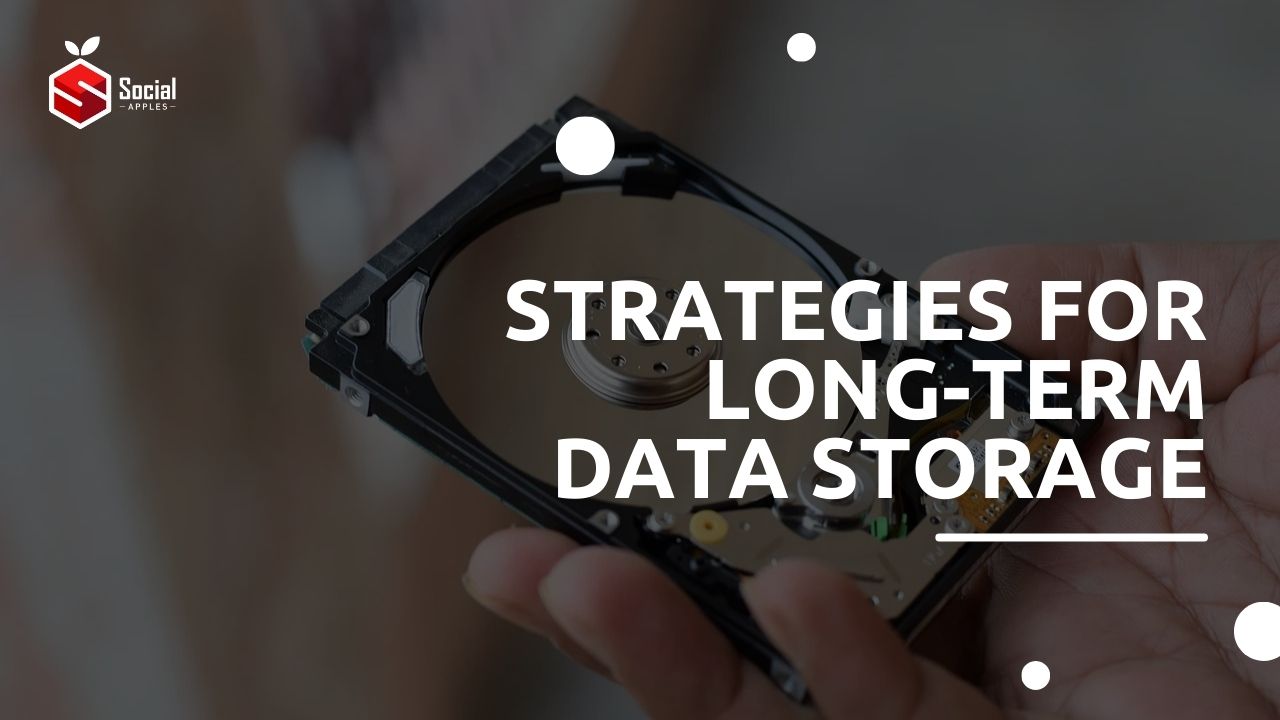In the modern digital era, data has become one of the most valuable assets for organizations and individuals. As our world becomes increasingly digitized, digital information is generated daily. From business records and documents to personal photos and videos, preserving this rapidly growing pool of data over the long run presents an immense challenge. Implementing thoughtful long-term data storage strategies can help protect valuable intellectual property, ensure regulatory compliance, safeguard priceless personal memories for future generations, and more.
The proliferation of new technologies and file formats poses significant risks for long-term data storage. If vital records are stored on old systems or obsolete media, they can vanish once the hardware and software needed to interpret the files disappear. As evolving technologies render prior formats unreadable, proactive migration and conversion measures become essential. Careful foresight is critical to developing adaptive preservation strategies to weather these changes.

Maintaining the integrity and accessibility of data over decades involves surmounting a complex array of technological, organizational, and legal hurdles. From system failures and cyberattacks to format shifts and degrading storage media, many threats can disrupt access or damage archives over time. Staying abreast of emerging changes while adhering to shifting industry regulations makes implementing reliable long-term data retention a considerable challenge.
Contents
Long-Term Data Storage
Long-term data storage refers to preserving digital information in a reliable and accessible format for an extended period spanning years or decades. It enables later retrieval and usage of everything from personal photos and correspondence to corporate documents and records. The scope encompasses choosing appropriate storage systems, maintaining integrity through migration and conversion, backing up data redundantly on-site and off-site, and ensuring usability with meticulous metadata.
While digitization has impacted all areas of business and culture, long-term data retention is particularly crucial for specific sectors. These include healthcare organizations dependent on patient records, financial firms bound by regulations on documenting transactions, cultural institutions preserving artifacts and history, and more. Such entities may face legal or compliance consequences if archives become compromised or inaccessible over multi-year periods.
Many incorrectly assume that storage systems will adequately preserve data indefinitely without oversight or intervention. In reality, diligent management is vital over time. Companies often neglect legacy formats and off-site redundancy in misguided attempts to cut costs. Personal archivists also need help maintaining vast photo collections spanning new and old mediums. Avoiding common mistakes of complacency and selectively backing up only the newest data is critical for robust preservation.
Challenges in Long-Term Data Preservation
Due to rapid innovation cycles, storage hardware and file formats become outdated quickly. For example, while early personal computer floppy disks were ubiquitous decades ago, systems today cannot interface with them. As new operating systems, software, and devices emerge, older ones fade into obscurity—along with data stored in their proprietary ecosystems if not regularly migrated forward.
Over decades of use, all storage media inevitably decays. Magnetic storage media slowly loses information through a process called “bit rot,” discs and drives can also suffer physical damage over time, resulting in corruption or data loss if backups are lacking. For this reason, storage formats like etched glass discs or QR barcode carvings onto durable materials hold promise for extra-long-term preservation capabilities.
From financial transactions to medical history, records across many industries fall under various regulatory and compliance frameworks geared toward consumer privacy, fraud prevention, and more. Those overseeing decades-long archives must remain aware of relevant current and emerging laws to avoid steep fines for non-compliance. Staying on top of constantly shifting technology and regulations in tandem poses an added difficulty.
Strategies for Successful Long-Term Data Storage
Choosing the Right Storage Media
Overview of different storage options (e.g., tapes, optical media, cloud storage, flash drives) No single medium provides a panacea for every long-term storage need. Tape formats offer immense capacity to back up server data yet slow retrieval times. Optical disc varieties have shifted rapidly and can degrade without proper handling. Cloud services facilitate ubiquitous access but rely on vendors remaining solvent. And while portable flash drives enable cost-effective transfers, they tend to fail quicker than pricier rivals physically.
Pros and cons of each storage medium Weighing individual use cases, budgets, portability needs, and more allows tailoring an optimal blend of multiple formats where each addresses the shortcomings of others. For example, using read-only optical media for archiving plus redundant cloud and local drive backups can limit failure risks and disruption. Regular integrity checks and selective migration or conversion help future-proof this mix.
Using Flash Drives for Document Sorting
Advantages of flash drives in document organization Thanks to their compact size, universal connector standard, and rapidly falling cost-per-gigabyte, flash drives offer a versatile way to sort and transport important documents. Their plug-and-play functionality enables convenient transfer between systems without manual software/hardware configuration. Password protection also secures sensitive materials in a portable form factor.
Practical tips for sorting and storing different documents on flash drives: Well-labeled flash drives can readily organize tax documents, medical records, insurance policies, product information, personal memos, and more for fast access while saving limited primary storage capacity. However, their propensity for failure and data degradation over years of extensive rewriting necessitates using read-only archived copies for specific document categories, complemented by another form of live backup elsewhere.
To get started on data sorting using flash drives, don’t forget to check out wholesalers’ bulk usb drives to get cheap deals.
Data Migration and Format Conversion
The importance of periodic migration As hardware and software evolve, actively migrating archives to current systems and file formats ensures continued accessibility while keeping degradation risks low. Leaving data stagnant on obsolete media guarantees decay or incompatibility over a long enough time. Though resource-intensive, regularly future-proofing data pays dividends for longevity.
Beyond migrating data into new gear, converting proprietary formats into common standards like PDF for documents, JPEG for images, and more helps hedge against commercial extinction compared to relying on a single vendor’s formats. Choosing widely adopted open formats reduces risks tied to proprietary ecosystems disappearing.
Implementing Robust Metadata Systems
The role of metadata in data preservation Searchable metadata forms an invaluable roadmap, making finding desired items among vast archives much more accessible for both systems and their human operators. Documents tagged with details on origin, context, access restrictions, and optimum formats guide preservation workflows. Embedded metadata within files also facilitates programmatic processing and automation opportunities.
Best metadata creation and management practices: Manually capturing metadata during digitization improves context versus post-hoc additions. Descriptions should target enhancing findability for the archive’s intended use, balancing thoroughness with ease of entry to ensure consistent information quality over many iterations. Applying unique identifiers facilitates tracing items across storage migrations. Partnering human insight with AI will further optimize metadata at scale.
Security Measures for Archival Data
Protecting aging archives from unauthorized access or theft requires robust encryption coupled with strictly enforced, audited access policies limiting visibility only to approved personnel on a need-to-know basis. As quantum computing threatens conventional encryption down the line, upcoming cryptographic standards like NIST’s post-quantum candidates merit consideration.
Addressing cybersecurity threats over an extended period Archives represent high-impact targets, making comprehensive cybersecurity essential. However, multi-decade preservation imposes unique challenges of perpetually maintaining systems against threats evolving amid changing technological landscapes. Constant software patching, hardware replacement, intrusion detection, and user education help sustain defense-in-depth.
Conclusion
Successful long-term data preservation necessitates proactive integrity checks, continual migration to current formats, redundant and distributed storage models, accessible metadata, adaptive security, and overall technological agility to account for unpredictable change across decades. Organizations must make data preservation an urgent priority. Drawing inspiration from proven century-spanning archives, a spirit of innovation and resilience planning will future-proof valuable digital artifacts to securely serve evolving needs not just years but potentially generations ahead.













